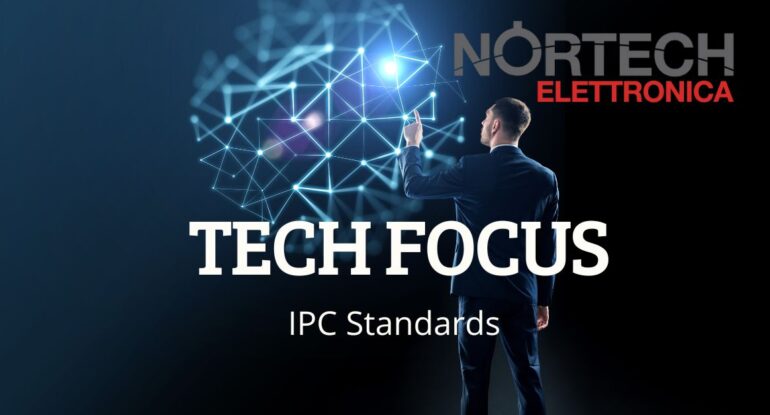The IPC (Institute for Printed Circuits) standards play a fundamental role in the electronics industry, providing international guidelines to ensure quality, reliability, and safety in the design and assembly of electronic boards (PCBA). These standards are widely adopted by industries operating in critical sectors such as aerospace, military, medical, and industrial, where high performance reliability is required.
The main IPC standards include: • IPC-A-610: Defines the visual acceptance criteria for electronic assemblies. • IPC-7711/7721: Guidelines for the rework and modification of printed circuit boards. • IPC-2221: Design standard for PCBs. • IPC-J-STD-001: Requirements for soldering quality.
IPC Quality Classes: Differences between IPC Class 1, Class 2, and Class 3
The IPC standards categorize assembled electronic products into three distinct classes, reflecting the level of quality and application scope:
IPC Class 1: General use products
This class applies to consumer electronics, where reliability is not critical. The quality requirements are minimal and allow for minor defects as long as the product is functional. Class 1 products do not require extended lifespan or continuous performance.
• Examples: household appliances, electronic toys, consumer devices.
• Application: non-critical environments, with low production costs and tolerance for minor defects.
IPC Class 2: Extended service products
Class 2 is reserved for electronic products intended to operate continuously and reliably for extended periods without the need for frequent repairs. The quality requirements are more stringent than Class 1, and minor defects are tolerated only if they do not affect the product’s functionality and lifespan.
• Examples: industrial equipment, computers, telecommunications instruments.
• Application: sectors requiring medium reliability, with stable operation over time.
IPC Class 3: High-reliability products
Class 3 is intended for products where reliability is critical, as their failure could pose serious safety risks, economic damage, or environmental harm. The quality requirements are extremely strict: no aesthetic or functional defects are allowed, and the products must operate perfectly even in harsh environmental conditions.
• Examples: medical equipment, avionics, military systems.
• Application: critical sectors such as defense, aerospace, and medical, where safety and reliability cannot be compromised.
The importance of IPC standards for the electronics industry
Adopting IPC standards ensures the quality of electronic products, reducing defects, increasing reliability, and improving production processes. In an industrial context where competition is high and quality is a key factor for success, IPC standards are an essential reference for any company aiming to guarantee high production standards.
Optimizing production according to IPC standards, especially in Class 2 and Class 3, allows companies to qualify as reliable suppliers for high-tech sectors, improving competitiveness in international markets and meeting the demands of clients who require high levels of precision and safety.
At Nortech Elettronica, attention to quality is constant, which is why, in close collaboration with our clients, we have adopted several standards that we invite you to review.
Nortech operators with IPC certification
Nr.6 operators with CIS IPC 7711/7721 certification
Nr.5 operators with CIS IPC A-610 certification
Nr.1 operator with CIS IPC A-600 certification




